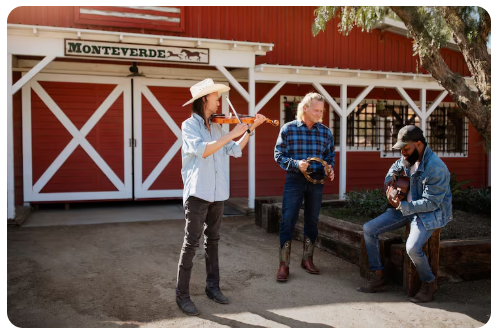
Rodeo events, with their thrilling display of athleticism and tradition, require meticulous planning to ensure everything runs smoothly and safely for competitors, animals, and spectators.
Organizing a perfect rodeo takes more than just booking the venue; it demands attention to detail across multiple fronts.
1. Secure the Venue and Dates
The first step is securing an appropriate location. A perfect rodeo grounds needs ample space for the arena, chutes, pens, spectator seating, parking, and vendor areas. Check the facility’s history—does it have experience hosting equestrian or livestock events?
Confirm the event dates well in advance, taking local weather patterns and other major events into account to maximize attendance. Ensure you have the necessary permits and insurance coverage early in the planning process.
2. Prioritize Animal Welfare and Safety
The well-being of the livestock is paramount to a successful and ethical event. Establish clear protocols for animal handling, transport, and care, strictly adhering to relevant regulations. Hire experienced stock contractors and veterinarians to be on site.
The arena surface must be properly maintained to reduce the risk of injury to both animals and contestants. Adequate, shaded pen space and access to fresh water are non-negotiable necessities.
Transparency in animal welfare practices builds trust with the community and ensures a positive experience.
3. Coordinate Competitors and Logistics
Managing contestant entries, fees, and scheduling is a complex task. Utilize a robust online registration system for efficiency. Clearly communicate rules, pay-out structures, and competition times to all participants.
On the day, a well-organized flow from the holding pens to the bucking chutes is essential for a fast-paced rodeo.
Appoint a dedicated team to manage the competitor check-in, bib assignment, and livestock draw. A detailed event timeline, distributed beforehand, helps everyone stay on track.
4. Master Marketing and Promotion
Generating buzz is crucial for filling the stands. Start your promotional campaign several months out. Use a mix of digital marketing—social media, local event calendars, and targeted online ads—alongside traditional methods like posters, radio spots, and local partnerships.
Highlight the star competitors, specialty acts, and unique features of your event. Consider early-bird ticket deals or family packages. A strong, consistent brand image for your rodeo will draw both loyal fans and first-time attendees.
5. Ensure Spectator Experience and Comfort
A great spectator experience involves more than just the action in the arena. Comfortable, safe seating, clear sightlines, and adequate restroom facilities are baseline requirements. Provide a variety of food and beverage options, including family-friendly and accessible choices.
Consider incorporating activities outside the main arena, such as meet-and-greets, a fan zone, or merchandise stalls, to enhance the overall atmosphere. Good signage throughout the venue is essential for parking and navigation.
6. Focus on Crisis Management and Security
No event is complete without a solid plan for emergencies. Establish clear communication channels between all staff, security personnel, and emergency services. Outline detailed procedures for weather delays, medical incidents involving contestants or spectators, and animal-related emergencies.
Hire experienced security staff to manage crowds, parking, and access control. Conduct a pre-event briefing with all staff and volunteers to ensure everyone knows their roles and the emergency protocols. A smooth operation depends heavily on proactive safety and security measures.
